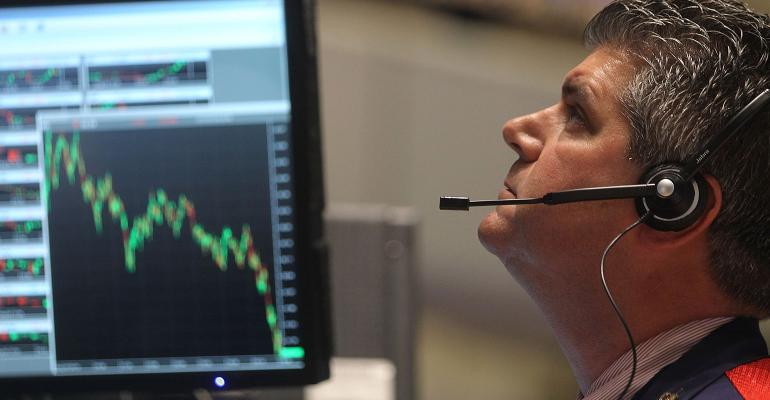By Sejul Gokal and Lu Wang
(Bloomberg) --Chart-happy Wall Street was hypnotized Thursday by a diagram purporting to show the bond market sending terror alerts into stocks.
It’s an overlay of the exchange-traded funds tracking shares and high-yield debt: credit has tumbled since the start of August, the S&P 500 not so much (before today). For equities, that’s supposedly bad, and it certainly looks bad as stocks endure their worst selloff in three months. But is it a reliable signal?

There’s a securities industry truism that credit leads equities, particularly speculative-grade. Junk traders are disciplined and precise, the story goes, unlike stock investors who subsist on fumes of sentiment. As spreads widen, it’s time to get out of the pool.
The theory had a star turn in late 2015 when bears observed that yield premiums on some classes of U.S. debt had widened by more than 1.5 percentage points in the 12 months leading up to August of that year while the S&P 500 just kept rising. Stories hit, and a few weeks later the U.S. benchmark share gauge suffered its steepest correction since 2011.
One thing to realize about the divergence between stocks and bonds now: it’s nowhere near as dire as back then. Junk credit tracked by the iShares iBoxx $ High Yield Corporate Bond ETF fell in three of four quarters heading into midyear-2015; the S&P 500, only one.

Indeed, the divergence isn’t that wide compared with earlier this year. One optical effect of today’s chart is that it obscures stretches in which stocks were breaking from credit at a similar trajectory, but both were going up.
While not as scary a divergence, looking at 10-day intervals, there’s been almost two dozen larger dislocations between junk and stocks in 2017. And you only have to go back to March to find a stretch when high yield fell as much at a time when the S&P 500 was holding firm.
Before Thursday, the junk fund was down 1.3 percent in August, compared with a 0.2 percent gain in the SPY fund. That signal had an appearance of prescience Thursday, when the stock ETF dutifully plunged amid rising concern that tensions on the Korean peninsula will lead to military confrontation. Junk also fell, illustrating a broader point: the two have similar enough risk profiles that they often retreat on the same signals.
The losses in high-yield credit are noticeable but far from unprecedented. The junk ETF is down 1.2 percent in the past four days, the most since March 10. Levels of anxiety are higher: implied-volatility skew three-month out-of-the-money HYG options has crept to an 18-month high.
In other words, traders are paying up for protection against a potential deepening of junk-bond losses -- and that could spell more equity weakness.
“What makes this relevant now, is that we are approaching the start of Fed balance sheet reduction,” Societe Generale SA strategist Kit Juckes wrote in a note to clients. “Fed balance sheet reduction ‘ought’ to be felt in high-yield spreads and high yield ETFs, presumably, before it’s felt anywhere else. So the high yield market is the Fed-watcher’s equivalent of the canary in the coal mine in the months ahead.”
To contact the reporters on this story: Sejul Gokal in London at [email protected] ;Lu Wang in New York at [email protected] To contact the editors responsible for this story: Jeremy Herron at [email protected] Chris Nagi





